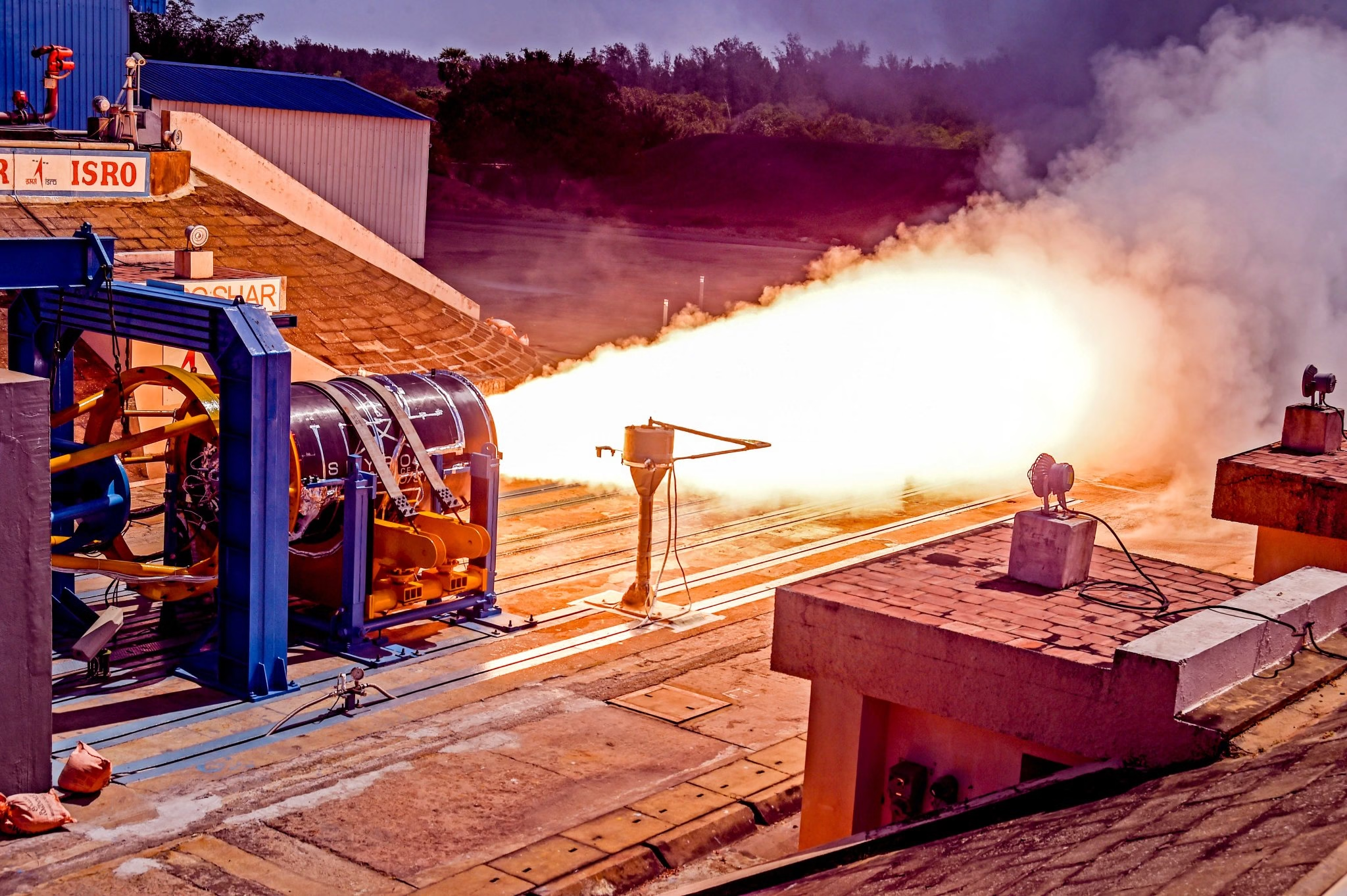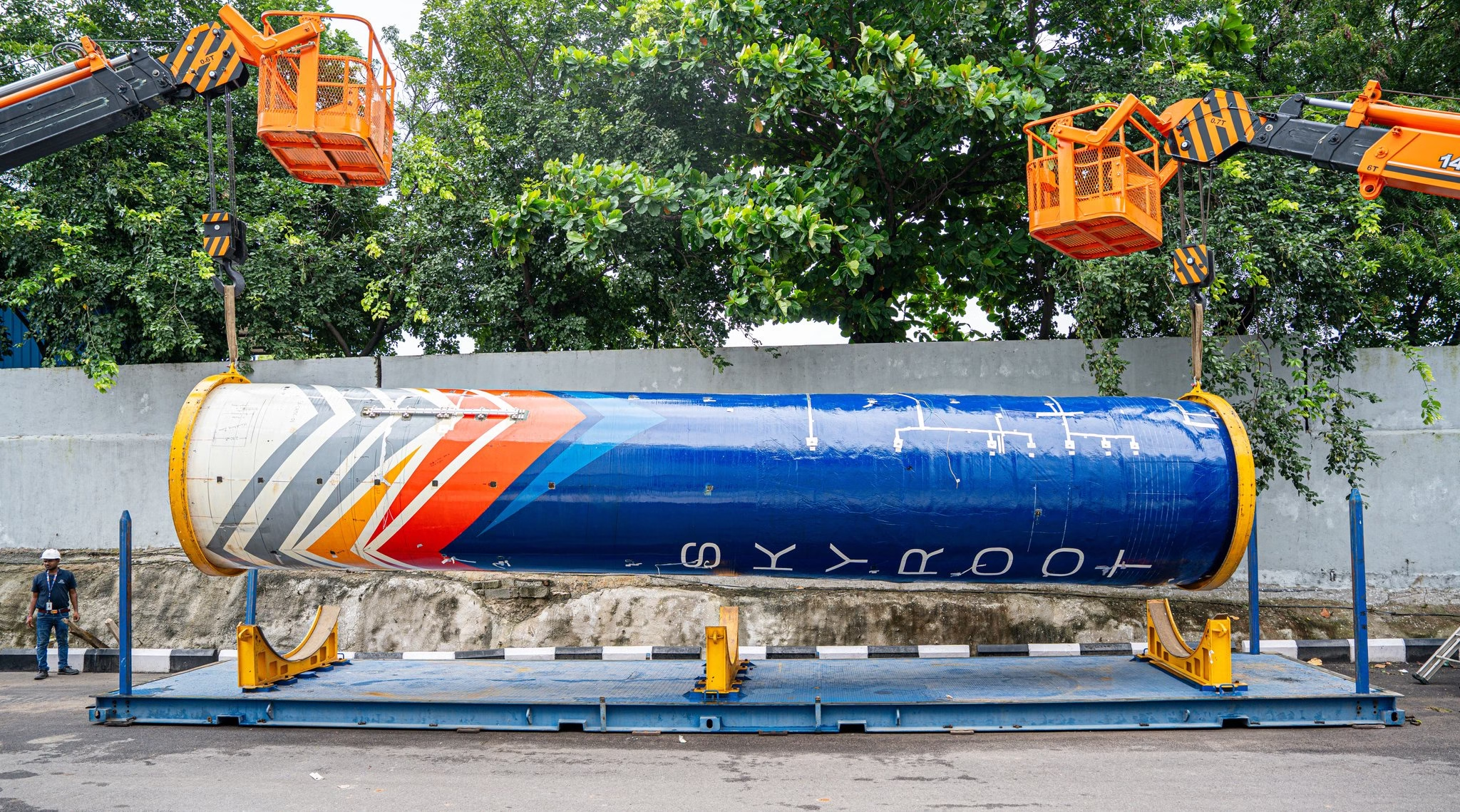Skyroot Vikram-1 and Vikram-2 rockets mark a new era in India’s private space sector, enabling low-cost satellite launches with global potential. Learn more detailed information about India’s private aerospace company Skyroot’s role in future space exploration opportunities.

Skyroot Vikram-1 and Vikram-2 Rockets: India’s Private Space Revolution
India has long been recognized as a global leader in cost-effective space missions, thanks to the Indian Space Research Organisation (ISRO). However, in recent years, the private sector has stepped into the spotlight, aiming to complement ISRO’s efforts and accelerate India’s role in the global space economy. At the forefront of this new wave is Skyroot Aerospace, a Hyderabad-based startup that is building the Vikram series of rockets, named after Dr. Vikram Sarabhai, the visionary father of India’s space program.
Among its ambitious projects, Vikram-1 and Vikram-2 stand out as the first two rockets in this series. These launch vehicles are designed to meet the growing global demand for launching small and medium satellites at affordable prices and with quick turnaround times. This article provides a deep dive into both rockets, their features, development status, and how they are poised to transform India’s space industry.
The Rise of Private Space Companies in India: Skyroot Vikram-1 and Vikram-2 Rockets
For decades, ISRO has dominated India’s space missions, from the successful Chandrayaan and Mangalyaan programs to commercial satellite launches. However, as global demand for satellite launches increases—particularly for small satellites and constellations—the need for commercial space launch providers has grown rapidly.
In 2020, the Government of India opened up the space sector to private companies through policy reforms and by establishing IN-SPACe (Indian National Space Promotion and Authorisation Centre). This move allowed private enterprises to build rockets, launch satellites, and provide commercial space services.
Skyroot Aerospace emerged as one of the leading players in this environment. Founded in 2018 by former ISRO engineers Pawan Chandana and Naga Bharath Daka, the company set out with the mission to make spaceflight more accessible and affordable.
The Vision Behind the Vikram Rocket Family
The Vikram rocket family has been designed to serve diverse customer needs, ranging from small payloads for startups and universities to more advanced missions for governments and commercial operators.
- Vikram-1: A small-lift launch vehicle capable of deploying small satellites into Low Earth Orbit (LEO) and Sun-Synchronous Orbit (SSO).
- Vikram-2: A more powerful medium-lift vehicle, currently in development, intended to serve the growing market for larger payloads and satellite constellations.
By creating scalable solutions, Skyroot aims to provide low-cost, on-demand launches, reducing wait times for satellite operators and enabling more countries and organizations to access space.
Vikram-1: Skyroot’s First Orbital Rocket
Design and Features
Vikram-1 is the company’s first orbital-class launch vehicle. It is specifically designed to cater to the booming small satellite market. Satellites today are becoming smaller, lighter, and more capable, and demand for dedicated launches is higher than ever.
- Payload Capacity: Up to 480–500 kilograms to a 500 km Sun-Synchronous Orbit.
- Stages: Multi-stage rocket, combining solid and liquid propulsion.
- Engines: Powered by the Kalam series of engines, including the Kalam-100 solid fuel motor in the first stage and Raman engines in the upper stage. The Raman engines are 3D-printed, making them cost-efficient and lightweight.
- Quick Turnaround: One of Vikram-1’s standout features is its ability to be assembled and launched within 24 to 72 hours, offering customers rapid access to space.
- Mission Flexibility: Supports multiple payload configurations, including ridesharing options for small satellites.
Current Status
Skyroot successfully tested the Kalam-100 stage and other engines, proving the reliability of its propulsion systems. Vikram-1 is expected to undertake its maiden orbital launch in 2025 from the Satish Dhawan Space Centre (Sriharikota).
When Vikram-1 launches, Skyroot Aerospace will become the first private Indian company to place a satellite into orbit, a milestone moment for the Izndian space industry.
Vikram-2: The Next Step Forward
Design and Features
Building upon the success of Vikram-1, the Vikram-2 rocket is currently under development as a medium-lift launch vehicle. It is designed for larger payloads and satellite constellations, which are in high demand for communications, Earth observation, and navigation services.
- Payload Capacity: Approximately 600–700 kilograms to Sun-Synchronous Orbit.
- Stages and Propulsion: Uses a more advanced version of the Kalam engines. Vikram-2 may include upgraded liquid propulsion or even cryogenic stages to enhance performance.
- Scalability: Designed to meet the requirements of international satellite companies that require launching multiple satellites in one mission.
- Potential Reusability: Though not confirmed, Skyroot has indicated that future versions of Vikram-2 may explore reusable technologies to further cut launch costs.
Development Status
Vikram-2 is in the design and development phase, with ground testing of engines underway. The rocket is expected to be ready for its first launch later in the decade, depending on the results of ongoing tests and market demand.
Comparing Vikram-1 and Vikram-2
Feature Vikram-1 Vikram-2
Payload to SSO ~480–500 kg ~600–700 kg
Target Market Small satellites, startups, rideshare missions Medium payloads, satellite constellations Propulsion Solid + liquid engines (Kalam & Raman series) Advanced Kalam engines + potential cryogenic Reusability No Possible in future versions
Status Maiden launch in 2025 In development
Why the Skyroot Vikram-1 and Vikram-2 Rockets Matter
1. Democratizing Access to Space
The Vikram rockets lower the cost barrier for accessing space. With rapid turnaround times and flexible payload options, universities, startups, and even smaller nations can launch satellites without waiting for years.
2. Boosting India’s Global Competitiveness
Currently, international players like Rocket Lab (Electron rocket), SpaceX (Falcon 9 rideshare missions), and Arianespace (Vega rockets) dominate the small satellite launch market. Skyroot’s entry with Vikram-1 and Vikram-2 allows India to compete globally and capture a share of this booming sector.
3. Encouraging Innovation
Skyroot’s use of 3D printing for engines, advanced composites for rocket structures, and modular design approaches represent the cutting edge of space technology. This innovation culture contributes to India’s growing reputation as a hub for aerospace engineering.
4. Strengthening India’s Private Space Ecosystem
The success of Vikram-1 and Vikram-2 will inspire other Indian startups to develop technologies for propulsion, satellite manufacturing, and in-space services. This ecosystem will create jobs, attract foreign investment, and accelerate India’s path to becoming a space economy leader.
Challenges Ahead: Skyroot Vikram-1 and Vikram-2 Rockets
While the Vikram rockets show immense promise, Skyroot faces several challenges:
- Competition: Global launch providers already have established markets and customers.
- Reliability: New rockets must undergo extensive testing to build trust with satellite operators.
- Funding: Building and launching rockets requires significant investment, and while Skyroot has raised substantial capital, continued growth depends on securing more.
- Regulatory Framework: India’s private space sector is still developing its regulations, which could impact timelines.
Despite these hurdles, Skyroot’s early achievements and strong technical foundation suggest that the company is well-positioned to overcome them.
The Future of Skyroot Aerospace: Skyroot Vikram-1 and Vikram-2 Rockets
Skyroot Aerospace has already made history by becoming the first private Indian company to launch a rocket into space with the successful suborbital flight of Vikram-S in November 2022. This milestone proved the company’s technological readiness and opened the door for orbital-class launches.
With Vikram-1 preparing for its first mission in 2025 and Vikram-2 under development, Skyroot is building momentum to establish itself as a reliable commercial launch provider. Beyond these rockets, the company may also explore advanced technologies such as reusability, cryogenic engines, and interplanetary missions in the future.
https://x.com/SkyrootA/status/1958751953892385104?t=LaueJEg2h1GhXGMqCVrZYw&s=19
Conclusion: Skyroot Vikram-1 and Vikram-2 Rockets
The Skyroot Vikram-1 and Vikram-2 Rockets mark a turning point for India’s private space sector. Vikram-1 will cater to the immediate needs of the small satellite market, while Vikram-2 is being developed to serve larger payloads and constellations. Together, they embody Skyroot Aerospace’s vision of making space more accessible, affordable, and sustainable.
As the world looks to expand into Low Earth Orbit, lunar exploration, and beyond, India’s private companies like Skyroot are emerging as key players. If Vikram-1’s upcoming launch is successful, it will not only cement Skyroot’s place in history but also prove that India’s private sector is ready to take its place among global space leaders.
The journey of Vikram-1 and Vikram-2 is not just about rockets. It is about India’s ambition to democratize space exploration, inspire innovation, and create a future where space is within reach for all.
Nuclear Propulsion in Space: Is It Safe Option to Make Multiple Trips On Mars?
FAQs on Skyroot Vikram-1 and Vikram-2 Rockets
Q1. What is Skyroot Aerospace?
Skyroot Aerospace is an Indian private space company founded in 2018 by former ISRO scientists. It is dedicated to developing cost-effective and reliable launch vehicles for small satellite missions.
Q2. What is Vikram-1?
Vikram-1 is Skyroot’s first small satellite launch vehicle (SSLV), designed to carry payloads of up to 480 kg to low Earth orbit (LEO). It features solid propulsion stages and a 3D-printed engine for efficiency and reduced cost.
Q3. What is Vikram-2?
Vikram-2 is an upgraded rocket from Skyroot with higher payload capacity and advanced propulsion, including cryogenic upper stages. It is designed to expand satellite launch capabilities for commercial and scientific missions.
Q4. How are Vikram-1 and Vikram-2 different?
Vikram-1 is focused on small payload launches, while Vikram-2 offers greater lifting power and flexibility. Vikram-2 incorporates semi-cryogenic and cryogenic technologies for improved efficiency.
Q5. When will Vikram-1 launch?
Skyroot is preparing Vikram-1 for its maiden orbital launch soon, marking India’s first privately developed rocket to reach space.
Q6. Why are Skyroot’s rockets important for India?
Skyroot’s Vikram series boosts India’s private space sector, reducing reliance on foreign launch providers, and supporting startups, research institutions, and global satellite companies with cost-effective solutions.
Q7. Are Vikram-1 and Vikram-2 reusable?
Skyroot is integrating reusability features in its future designs. While Vikram-1 is expendable, Vikram-2 will gradually incorporate more reusable technologies.
Q8. How do Vikram rockets compare to ISRO’s launch vehicles?
While ISRO focuses on large and heavy-lift missions, Skyroot’s Vikram rockets complement this by targeting the small satellite market, offering quick, flexible, and affordable launches.
Q9. Who are the founders of Skyroot Aerospace?
Skyroot was founded by Pawan Kumar Chandana and Naga Bharath Daka, former ISRO scientists with deep expertise in rocket design and propulsion systems.
Q10. What is the future of Skyroot Aerospace?
Skyroot aims to develop more advanced rockets like Vikram-3 and eventually reusable launch vehicles, positioning India as a strong player in the global commercial space sector.

